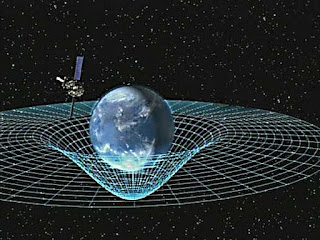Earth has a
mass of 5.97 x 1024 kg – a number that is hard to comprehend.
However, its mass is a mere three millionths of the mass of the Sun. Where did
all this matter come from and how did it form the solar system?
The Big
Bang and star stuff
The universe
as we know it started 13.77 billion years ago in an event known as the Big
Bang. This was a rapid expansion of space, time and matter. The first atoms
were created after about a second, but it was about 400 million years before
the first stars had formed from the hydrogen atoms created in the early
universe.
In the centre
of stars, hydrogen atoms fuse to form larger atoms of carbon, oxygen, silicon
and iron. Eventually, stars stop their fusion reactions and ‘die’. Sometimes
they collapse inward and explode, throwing these heavier atoms out into a great
cloud called a nebula. This star stuff then clumps again and forms a new star,
but with rocky matter and planets around it.
Earth and
everything on it are made of matter that was formed in the Big Bang and
rearranged during the lifetimes of early stars. The atoms in your body were
once part of a star!
The
universe is 13.77 billion years old, but our solar system formed only 4.6
billion years ago. (NASA/WMAP Science Team 2006, Public domain)
Webpage:
- The Big Bang
(Exploratorium and CERN)
Videos:
- TheBeginning of Everything – The Big Bang (Kurzgesagt – In a Nutshell)
- Thebeginning of the universe, for beginners [Tells how scientists use particle accelerators to study the origin of the universe] (TED-Ed)
Four fundamental
forces
Scientists have
identified four basic forces that hold together the universe and explain
interactions between particles. In order of strength, they are:
- Strong nuclear
- Electromagnetic
- Weak nuclear
- Gravity
The strong
nuclear force is incredibly strong over a very tiny distance in the nucleus of
atoms. It holds quarks together, making protons and neutrons. It also helps
hold the nucleus together. This force is important in the origin of our solar
system because it keeps atoms together.
Electromagnetic
force is strong over short distances, but very weak over long distances. The
electric portion of the force explains how charged particles interact. Like
charges repel and unlike ones attract. If the charged particles are not moving,
we call this static electricity. You experience static electricity if you get
zapped getting out of the car or after shuffling across the carpet. Static
electricity helped pull charged particles of dust and gas together to form
clumps of matter that eventually became part of stars and planets.
Weak nuclear
force is responsible for nuclear decay (e.g. radiation). It is also vital for
fusion reactions that take place in the Sun. Weak nuclear force helped form the
larger atoms of star stuff that make up our planets and helps to power the Sun.
Gravity is a
very weak force, but it acts over immense distances. Newton said that gravity
is the attraction between two masses. When you fall, the Earth moves toward
you, but to such a tiny degree that we can’t measure it. This is because the
Earth has a MUCH greater mass than you. Gravity caused matter to clump in the
early solar system; a process known as accretion. Gravity also causes the
planets to orbit the Sun.
Einstein’s
theory of general relativity gives us a different way of thinking about
gravity. It suggests that gravity is because objects bend space-time. The
larger the object, the greater the bending. Thus, the Sun causes a huge bend in
the space-time of the solar system, attracting all objects in the solar system
to the Sun.
NASA
illustration of Gravity Probe B orbiting the Earth to measure space-time. (NASA
2008, Public domain)
Webpage:
- The Four Fundamental Forces of Nature (Space.com)
- Planets started out from dust clumping together. Here’s how. (Universe Today)
Videos:
- Origin of solar system (California Academy of Sciences)
- How to think about gravity (TED Ed)
- The science of static electricity (TED Ed)
Explore
the solar system and forces that shaped it
See an
incredible scale model of the solar system from To Scale:The Solar System
Learn more
about meteorites – material left over after solar system formation.
Watch thisvideo about the formation of the solar system.
Carry out
your own experiments with static electricity and gravity.



